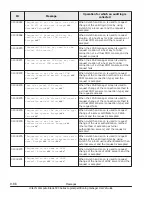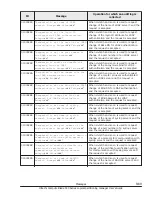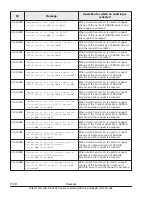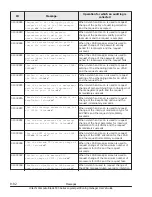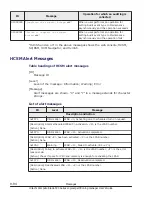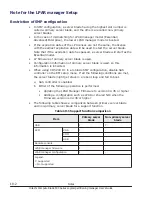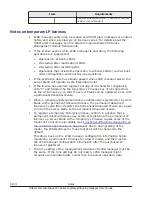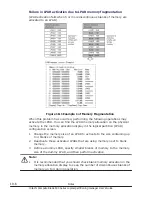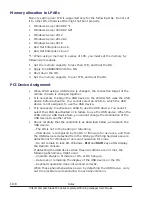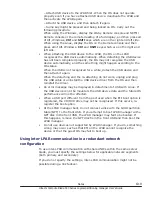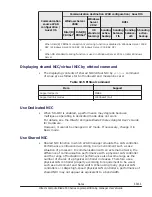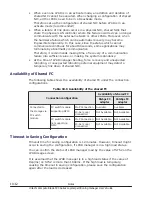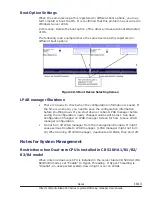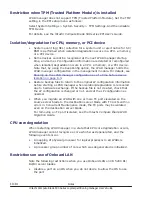
Note for the LPAR manager Setup
Restriction of SMP configuration
•
In SMP configuration, a server blade having the highest slot number is
called a primary server blade, and the others are called non-primary
server blades.
•
In the case of mismatching for LPAR manager model (Essential/
Advanced/Enterprise), the lower LPAR manager model is booted.
•
If the expiration dates of the LP licenses are not the same, the license
with the earliest expiration date will be used to start the server blade.
Note that if the expiration date has passed, a server blade will start as the
Essential model.
•
LP firmware of primary server blade is used.
•
Configuration information of primary server blade is used, so this
information is inherited.
•
When using CB 520X B1 in a 4-blade SMP configuration, disable SAS
controller on the EFI setup menu. If all the following conditions are met,
the server blade might get stuck in a reboot loop and fail to boot.
a
.
SAS controller is enabled.
b
.
Either of the following operation is performed.
•
Updating the LPAR Manager Firmware to version 02-45 or higher
•
Adding a configuration such as LPAR or shared NIC when the
Firmware version is 02-45 or higher
•
The following table shows a comparison between primary server blade
and non-primary server blade for a support function.
Table 10-1 Support function comparison
Item
Primary server
blade
Non-primary server
blade
USB
Y
Y
KVM
VGA
Y
-
COM
Y
-
USB
Y
-
Remote console
Y
-
LPAR manager firmware
Y
-
LPAR manager configuration
Y
-
Legend:
Y: Supported
-: Not supported
10-2
Notes
Hitachi Compute Blade 500 Series Logical partitioning manager User's Guide





